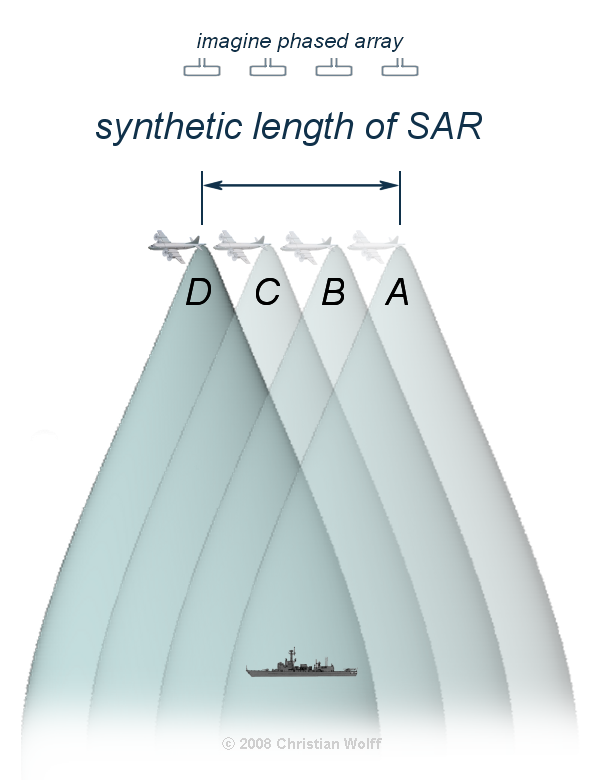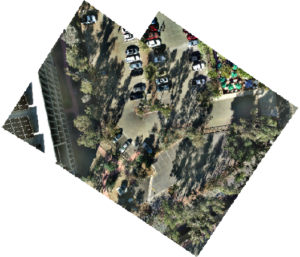In one of the previous posts, I discussed the principle of Side Looking Airborne Radar (SLAR) systems. In that article, we established the formula for the azimuth resolution of SLAR systems as:
PA = λR/L = λH/L cosØ = βH/cosØ
Where λ is the wavelength, L is the the side length and R is the distance of the radar sensor from the ground. This implies that the higher the platform, the lower the azimuth resolution. For example, Considering a C-band sensor (λ = 3cm) using an antenna with 3m side length mounted in a satellite orbiting at an altitude of 300km and observing at an angle Ø = 30°. The azimuth resolution of the system is about 4km. This resolution is too poor for any earth observation applications. A potential solution to increase the azimuth resolution is to increase the length of the antenna. To achieve 3om resolution, we would need an unreasonable antenna of 350m length. This length is too large to place in a spaceborne platform. Another plausible solution is the Synthetic Aperture Radar (SAR) concept.
SAR involves the synthetization of high resolution capability of large antenna from a sequence of acquisitions along the flight line by a shorter antenna. The principle of SAR system is illustrated with the figure below.

A radar antenna of reasonable length transmits successive pulses to illuminate a target scene as it moves from A to D along its flight path. The target scene is imaged from multiple antenna positions and all the acquisitions are combined during post processing to form a higher resolution data as if it was acquired from a longer antenna.



